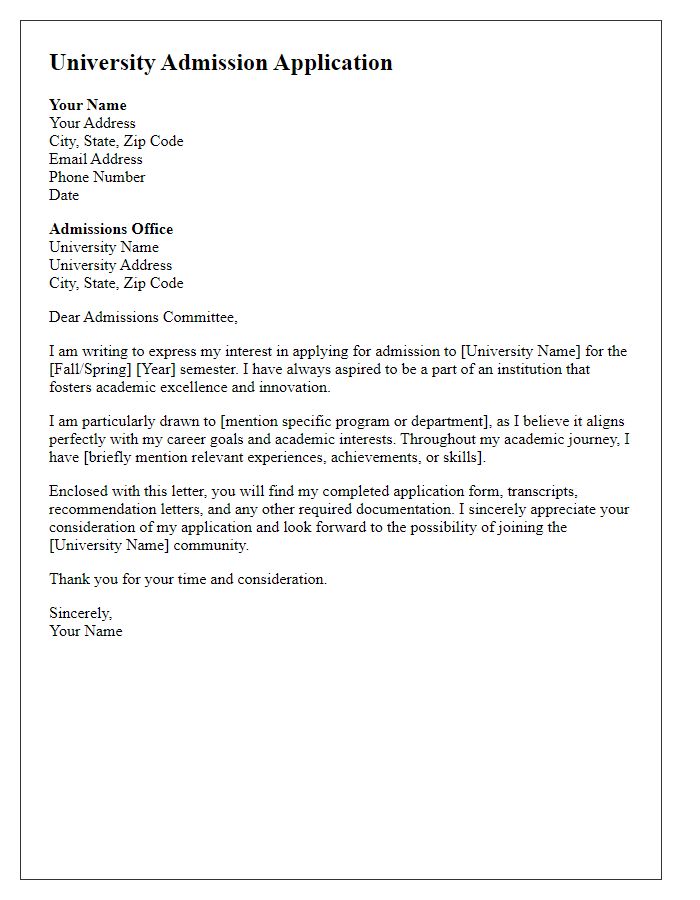Are you dreaming of pursuing higher education and need a strong letter to accompany your university admission request? Crafting the perfect letter can significantly enhance your application, showcasing your passion and determination. In this article, we'll guide you through essential tips and a handy template to help you present yourself effectively. Ready to dive in and learn how to make your admission request stand out?

Clear Subject Line
A clear subject line for a university admission request should reflect the intent succinctly and professionally. An example might be: "Request for Admission Consideration for [Your Name] - [Desired Program] for Fall 2024." This format includes essential information like your name, the program of interest, and the admission cycle, making it easier for the recipient to identify the purpose of your email immediately.
Formal Salutation
University admission requests often require a formal salutation that reflects respect and professionalism. This could include greetings like "Dear Admissions Committee," or "Dear [University Name] Admissions Office," ensuring the recipient's authority is acknowledged. Using the appropriate salutation sets a serious tone for the request, which is typically made by prospective students seeking entry into higher education institutions, where competition can be intense. Proper salutations contribute to the overall presentation of the application, influencing the first impression on the reviewers. Recognizing titles, such as "Dr." for academic professionals or "Mr./Ms." for staff members, can further enhance the professionalism of the correspondence. A well-crafted salutation is essential in formal letters, especially in academic contexts like university admissions.
Personal Introduction
To gain admission to prestigious universities, students often provide personal introductions that highlight unique backgrounds and aspirations. Such introductions typically include vital information like educational history, notable achievements (such as awards received in academic competitions), and extracurricular involvement (including leadership roles in clubs or sports). Additionally, students often outline their specific interests in fields, like engineering or psychology, and mention influential experiences (such as internships or volunteer work) that shaped their career goals. These elements collectively create a compelling narrative that showcases the applicant's potential and readiness for the challenges of higher education, specifically tailored to the mission and values of the institution.
Purpose of the Request
University admission requests often involve a detailed explanation of the applicant's goals and aspirations. Students articulate their desire to join a specific university, typically referencing its academic programs, culture, and opportunities, which align with their career ambitions. Admissions offices seek clarity regarding the applicant's purpose, allowing them to assess motivation and potential contribution to the university community. Personal anecdotes or experiences may illustrate the applicant's journey, enriching their narrative and showcasing resilience or dedication toward their chosen field. Providing a clear purpose enhances the application, increasing the likelihood of acceptance into competitive programs.
Closing and Contact Information
Universities often require applicants to provide a closing statement and contact information in their admission request letters. This section generally expresses gratitude and reiterates enthusiasm for the opportunity. Personal details such as full name, mailing address, phone number, and email address should be clearly listed. Formal closings, such as "Sincerely" or "Best regards," may follow the closing statement, ensuring a professional tone. Including these elements creates a clear connection and allows the admissions committee to reach out for further information or clarification easily.













Comments